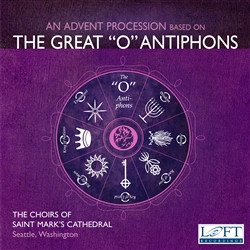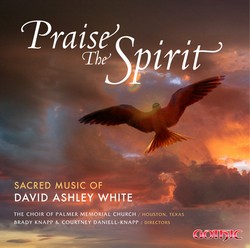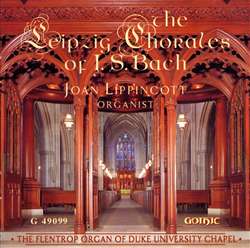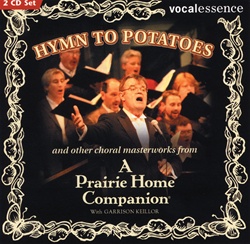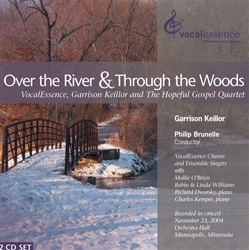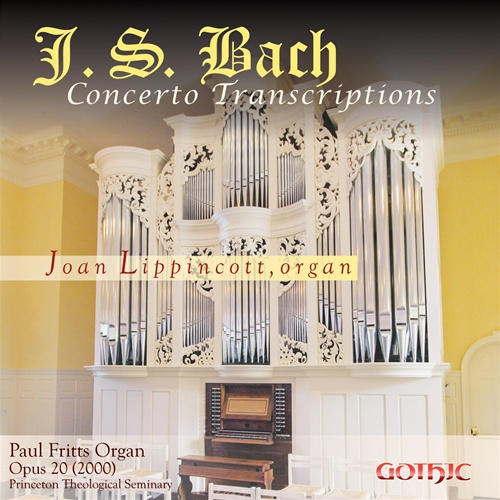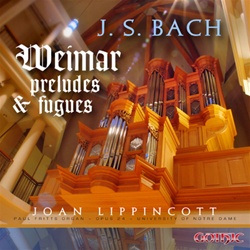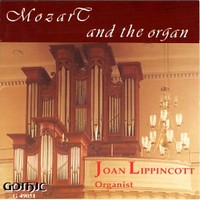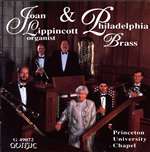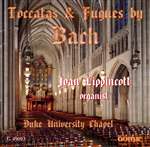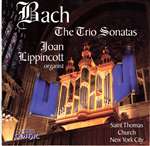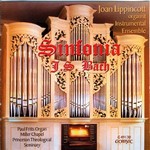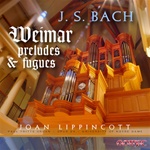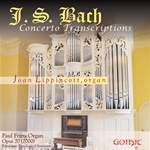We are getting extremely close to Thanksgiving (only 9 more days), and then three days after that will be the beginning of the Advent season. What it really means to us is that we get to highlight some of our favorite music! So today we are going to kick off this fantastic musical season with an album that encompasses both Christmas/Advent and Thanksgiving (as well as a little Easter even) - we're talking about the album "
Let Us Sing Sweet Songs" by Bern Herbolsheimer!
Let Us Sing Sweet Songs
Music for choir, brass, organ, harp, organ, and percussion by Bern Herbolsheimer
Opus 7 Vocal Ensemble, Loren Pontén, director
Listen to samples of the album at ClassicsOnline.com!
World Premiere Recording
A major collection of never-before-recorded music by Northwest composer Bern Herbolsheimer, performed in the beautiful acoustical setting of St. James Cathedral in Seattle. These lyrical works are interpreted with reverence and clarity by Opus 7 vocal ensemble under the direction of Loren Pontén. Opus 7 specializes in the performance of modern and contemporary works, and their previous recordings have received national praise.
1 Ave Regina (2001)
2 “Gloria” from St. James Mass for Peace (1982)
3 ‘Let Us Sing Sweet Songs” from St. James Mass for Peace (1982)
4 Thanksgiving Day, 1861: One Vacant Chair (2003)
5 “We Praise Thee O God” from Te Deum (1981)
6 Blessed (1992)
Seven Last Words (2002)
7 Father, forgive them
8 Amen dico tibi
9 Mulier, ecce filius tuus
10 Eli, lama sabatani?
11 Sitio
12 Consummatum est
13 Father, into thy hands
14 O come, O come (1999)
15 Silly Shepherds (1999)
16 Stille Nacht (2000)
Program Notes:
Seattle-based Bern Herbolsheimer is a cosmopolitan composer who chooses a wide variety of subjects for his work. A considerable portion has been dedicated to choral music, and of that a considerable number are sacred. This can be attributed in part to the rich choral culture in Seattle, which has emerged in the past few decades. Also significant is Herbolsheimer’s long-time collaboration with Dr. James Savage, who, as director of music at Seattle’s St. James Catholic Cathedral, was responsible for commissioning many works for performance there. As a result of his relationship to that Cathedral, the composer took part in a cultural and musical environment that gave precise significance to his creations. In addition to being a pianist, he is a vocal coach and accompanist, and as such has a particular sensitivity to the human voice: its possibilities and its limitations. He carefully judges the skills of the singers involved in his projects and provides them with challenges as well as satisfactions.
Ave Regina (2001)
Herbolsheimer has called his Ave Regina "a tribute to Verdi.” He writes, "Most opera-goers know [Verdi’s] haunting “Ave Maria” from Otello; most choral aficionados know his Ave Maria written 'on an enigmatic scale.' Few people, however, know his Ave Maria for soprano and strings. I have taken this third text (by an unknown writer from fifteenth- or sixteenth-century Italy) and set it, using an unusual scale (Aeolian with a flat fifth), which, due to its construction, is closely related to both the octatonic and whole-tone scales. I chose this text as an alternative to the usual Latin prayer because the Italian text is more personal, and, at the same time, more visceral."
Let us sing sweet songs and Gloria from St. James Mass for Peace (1982)
Both "Let us sing sweet songs" and "Gloria" are from the St. James Mass for Peace, the result of a commission by St. James Cathedral that was inspired by Archbishop Raymond G. Hunthausen’s concern for America’s dependence on weapons of mass destruction and his call to peace. The Gloria, scored for choir with brass, organ and percussion, is upbeat, rhythmic, even jaunty with its alternating 6/8 and 3/4.
The text of “Let us sing sweet songs” is by Irvine A. Huck, a former English teacher at Bellevue Community College in Bellevue, Washington, and currently principal accompanist for the Pacific Northwest Ballet in Seattle. This is a work of major dimensions, both in size and content. The text evokes the redemptive beauty of the Northwest: “Like fire on the mountain, fire in the lake…your careful orchards, 0 your deer foot seasons.” But the music is brooding and episodic, with instrumental and choral statements strategically balanced in importance. Ascending walking bass lines lend a processional splendor and extended organ pedals hint at vast, cloud-obscured landscapes. There is foreboding in the plaintive call of the oboe, recalling the image of the prophet lamenting the desolation of Jerusalem destroyed. There is redemption, though inconclusive, in the pedal of the extended final measures, a suspension of tension and a plea for peace in the words “dona nobis pacem.”
Thanksgiving Day, 1861: One Vacant Chair (2003)
The text of Thanksgiving Day, 1861: One Vacant Chair is from the Ozark folksong book that Herbolsheimer was using for some folksong settings. This text, which had no accompanying tune in the book, was written on Thanksgiving Day, 1861, during the American Civil War. Herbolsheimer comments, "Since the text refers to "breathing our evening prayer" I think it falls into the category of hymn. Considering the state of our country right now, the text is timeless, as well as appropriate."
We Praise Thee O God from Te Deum (1981)
The Te Deum, scored for piano, four hands plus percussion, originated as a joint project between two Seattle Presbyterian churches. Motif development is often the structural agent of Herbolsheimer’s style, and the first choral statement in the first movement, "We praise Thee, O God," is the melodic key of that entire movement. This text has often elicited a bombastic response from composers (witness settings by Bruckner and Verdi), but here, the mystical opening—with softly chiming piano chords reminiscent of Messiaen—is more personal and meditative. As we are encouraged, in the text, to praise, the intensity and fervor of the music increases.
Blessed (1992)
The setting of the familiar text of the beatitudes (Matthew 5:3-9) is scored for women’s voices and piano. Quiet, open chords from the piano set a mood for the profound simplicity of the words, and the mostly unison line for the voices has the dignity of eternal truth.
Seven Last Words (2002)
The text of Seven Last Words is taken solely from New Testament accounts of the crucifixion. It is a composite of the four Gospel records, as no one Gospel contains all seven utterances. Although since the eighteenth century, the Seven Last Words text has been used liturgically in the Good Friday midday prayer called Tre Ore, is a text that has not often been set but is contained in a few notable versions. The setting by Heinrich Schütz, a tiny chamber oratorio with choral and instrumental interludes, is a gem of the early Baroque. Franz Joseph Haydn’s setting was written for chorus and orchestra. Théodore Dubois’s version for choir with organ or orchestra was very popular in the early part of the twentieth century.
Herbolsheimer’s setting was commissioned by Seattle’s Cascadian Chorale, and is written for a cappella choir. The seven motets making up the work use both Latin and English words in what must be judged a most successful combination. Unlike Schütz, Herbolsheimer does not identify the seven statements in their specific contexts: what is heard are only the words of Christ with no context included. This allows Herbolsheimer to concentrate specifically on the words and to repeat them with great freedom.
The unrelieved somberness of this text could present problems for a composer interested in setting it. Using a dark palette, Herbolsheimer infuses it with great harmonic richness, rolling resolutely through sharp dissonances to unexpected resolutions on brightly hued consonances. Melodic patterns coalesce into tightly spaced chords, which become ostinato lines supporting the ongoing melody. These motets are not unlike the famous Rothko paintings whose brooding color schemes seem static, but are actually controlled turbulence. Here the text is not as important as what is being said musically about the text. Listeners should note the text, and then allow the music to shape their response.
O come, O come (1999)
Silly Shepherds (1999)
Stille Nacht (2000)
The three carol settings included here reveal a different aspect of Herbolsheimer, whose arrangements of folk songs, as these are, are a delightful contrast to his serious sacred works. His setting of “O come, O come Emmanuel” is of crystalline simplicity, the harp discreetly decorating the solo line. He presents a luxurious setting of ”Stille Nacht”, whose gentle downward curve of harmony links each verse into a single phrase. And how refreshing to hear a lighter note between the other more sober pieces, particularly when the “Silly shepherds” need rousing from sleep!
-- Robert Scandrett





